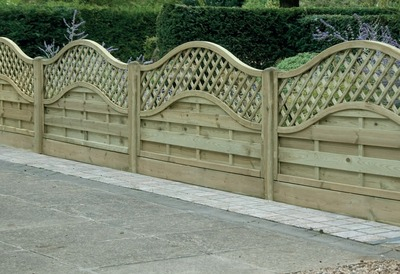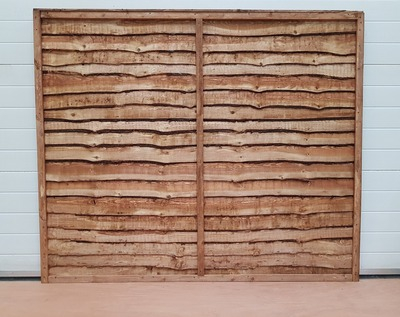Whether it's the seasonal and different weather throughout the year or faults with your fencing, it might be time to install or renew your fencing.
But, when should you install new fencing? Read on to find out.
Time of Year
When installing or renewing your fencing, the time of the year is going to affect your fencing installation. These are the ways to install your fencing without the seasonal changes and all weathers affecting your fencing installation.
The Off Seasons
When installing fencing in the winter, can prove incredibly challenging even for seasoned gardens, but there is a chance for you to use the off seasons to your advantage.
Being well into the off-season, you might find it easier to arrange for your dream fencing project in the less frantic winter period. When it comes around to Autumn, it is also an ideal time to beat the rush, and you’re more likely to be met with warmer, more agreeable conditions in general than you might in mid-winter.
Drier Weather
When wanting to install or renew your fencing, you’ll want to install a new fence when the weather is dry and mild, without the additional humidity or rainfall. This is why spring and summer are popular choices because it makes fence installation easier during this weather.
Even if you are installing drier weather, if you’re installing a fence in the middle of a heatwave, you’ll need to take precautions to prevent the wood from warping, splitting or becoming discoloured.
When installing fencing in your garden, proper treatment of the fencing is important if you want to try and prevent warping or splitting during temperature shifts, while UV staining will keep your fence from fading in the sunlight, maintaining its natural colour.
When choosing to the fence for your garden, using Pressure treated wood will stand with longevity. If you’re worried about moisture or humidity, there are a number of stains and preservatives available to provide instant protection for your fence, both directly after installation and beyond.
Fencing Leaning
As your fence starts to age over time, your fencing will gradually start to weaken. Whilst not always noticeable at first, you will begin to spot signs of its decline as your fencing starts leaning. More specifically, a lot of wooden fences begin to distinctively lean to one side or another. This can become a common and frustrating problem during the winter when the constant high winds and heavy rain can play havoc with the already weak structure around the base of the fencing.
Whilst your fencing can be fixed temporarily by adjusting the fence posts, over time it is unlikely that the damage will be restored for a longer period of time, meaning it’ll be more cost-effective and enable longevity with newer fencing.

Discolouration and Rotting
As well as your fencing leaning, another factor to be taken into consideration, rotting is often one of the first signs that there is something seriously wrong with your wooden fencing. Especially for the people who favour the rustic and traditional look, the rotting can ruin the look of the fencing.
Unfortunately, despite putting a lot of time and effort into keeping your fence in good condition, wood is very vulnerable to rotting as time goes on.
As the decay sets in, your fence will quickly begin to deteriorate, leaving it looking less attractive and a lot weaker than before. If caught in time, you can sometimes prevent the rot from spreading throughout the entire fence. However, it’s not often spotted until it’s too late. When this happens, there is no way to reverse the damage and the only option is to replace it with something new.
Fencing that was once bright and visually aesthetic can easily become dull and discoloured over time. There are several reasons why wooden fencing begins to discolour, but most of the time, it’s due to factors such as sun exposure, rust or the paintwork beginning to fade. Treating the fence could potentially slow down the discolouring but it’s unlikely to turn back time – it won’t ever be the same colour that it was beforehand.
Costly Repairs
When it comes to fencing, everyone likes to believe that something can easily be repaired to be able to lower costs and keep your fencing for longevity. After all, it must be cheaper to repair than replace your fencing, but this isn’t always the case. Whilst this can be true in some cases, it isn’t always the best outcome in every situation.
When you carry out repair after repair it can mean the costs slowly start to creep up, meaning you might end up paying a lot more. So, this means that when you notice that the payments start creeping up and becoming more frequent, it might be time to get yourself a refresh of new fencing.














